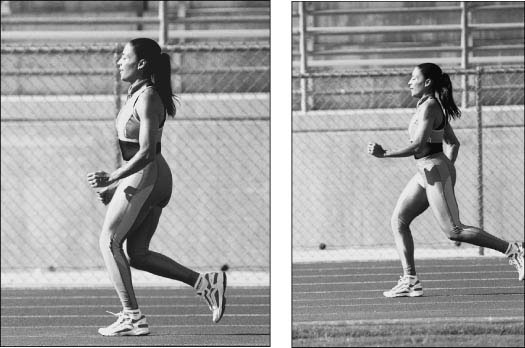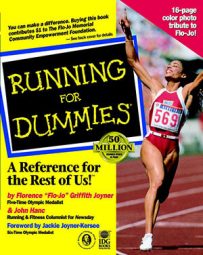To get the most benefit from running, you need to develop a form that is comfortable and efficient for you. Running forms can range from the barely functional plod that resembles a forced march to the poetry-in-motion style of Olympic champions. When it comes to a natural running style, most runners fall somewhere in between, but almost all runners can benefit from a little advice on form.
Good running form can improve your levels of running comfort, especially for the beginning runner. Improving your form also can help you run faster, but that’s more of a concern among experienced runners.
Upper body form for runners
Here are some pointers on upper-body running style:
Keep your head straight, with your chin level or slightly tucked. Your head should not be flung back, as if madly dashing for the commuter train. Look straight ahead or look out and just slightly down. Don’t look directly down at your feet unless you are negotiating potential ankle-turning terrain.
Shoulders should be squared (not rounding in), and your chest should be thrust (slightly) up and out. This form allows more oxygen into your lungs. Keep your back straight. Don’t hunch! A sagging running style or bending forward will inhibit oxygen intake.
Your back should be straight but not rigid. Avoid thrusting your shoulders back so hard that you seem to be forcing the shoulder blades together; doing so can result in tight neck, back, and shoulder muscles.
Your jaw should be relaxed and slack. Your mouth should be open for optimal breathing. Don’t squint or wince. (On sunny days, sports shades will help a lot.) Relax your face muscles!
 Keep your head level, shoulders square, and your back straight.
Keep your head level, shoulders square, and your back straight.
Proper arm form for runners
Proper arm carriage and arm action play a big supporting role in achieving a smooth, efficient style. Arm action plays a part in both your stride frequency and stride length. Stride frequency is the number of strides that a runner takes over a certain time period. Stride frequency and stride length are the two major determining speed factors for runners.
Here’s a checklist for proper arm form:
Keep an approximate 90-degree angle in the elbow. Try not to break the angle in your elbow as you swing your arms back.
Carry your arms at waist level or slightly above waist level. As your arm swings up, it should come up to about your collarbone. As your forearm comes down, it will initiate your backswing.
Pretend that a line is drawn down the center of your chest. Avoid crossing your arms over the imaginary center line during the phases of your arm swing. Cross-over arms can result in a twisting motion — from the hips and waist — that sabotages running efficiency.
Cup your hands, with the thumb resting lightly on top of the hand, thumb nail facing up. You should not clench your hands in a tight fist, but neither should you run with open palms or a “doggy paddle” motion.
On the backswing, the fingers of your cupped hand should lightly brush the side of your running shorts. The complete motion of the hand should look as if you are reaching for your wallet in a back pocket and then swinging forward again as if you are ready to shake hands.
Proper running form for legs
Ideally, runners should land lightly on the heel, with the lead leg just slightly bent at the knee (the best method to absorb shock), immediately roll up to the forefoot or toes, and push off powerfully into the next stride.
Here’s a form checklist for the legs:
Land lightly on the heel or midfoot, preferably with your lead leg bent slightly at the knee to help absorb shock. Avoid “reaching” with your lead leg.
Knee lift should be minimal (except on very steep hills) because too much up-and-down movement results in wasted energy.
When the leg swings back, you should feel a “flicking” sensation with the heel and ankle. But the flick should not be so much that you are close to kicking yourself in the buttocks.
Run in a straight line. Make sure that your feet land in parallel paths and do not cross over. Crossover foot strikes are a sure sign of too much twisting and wasted motion.
After each foot strike, drive into your next stride with a good push off the toes or forefoot.

